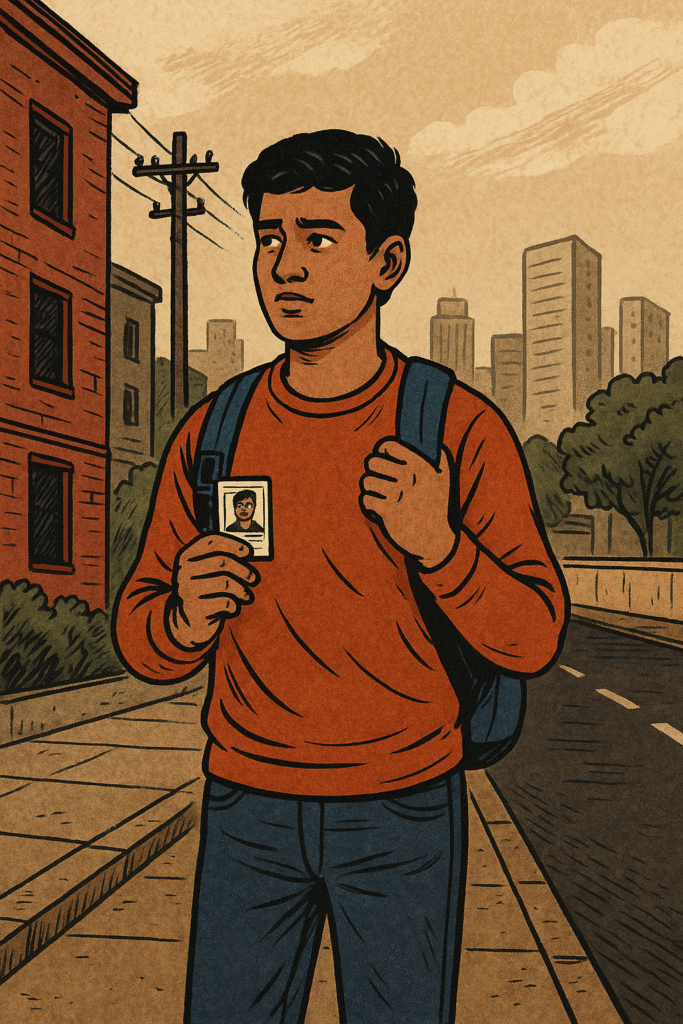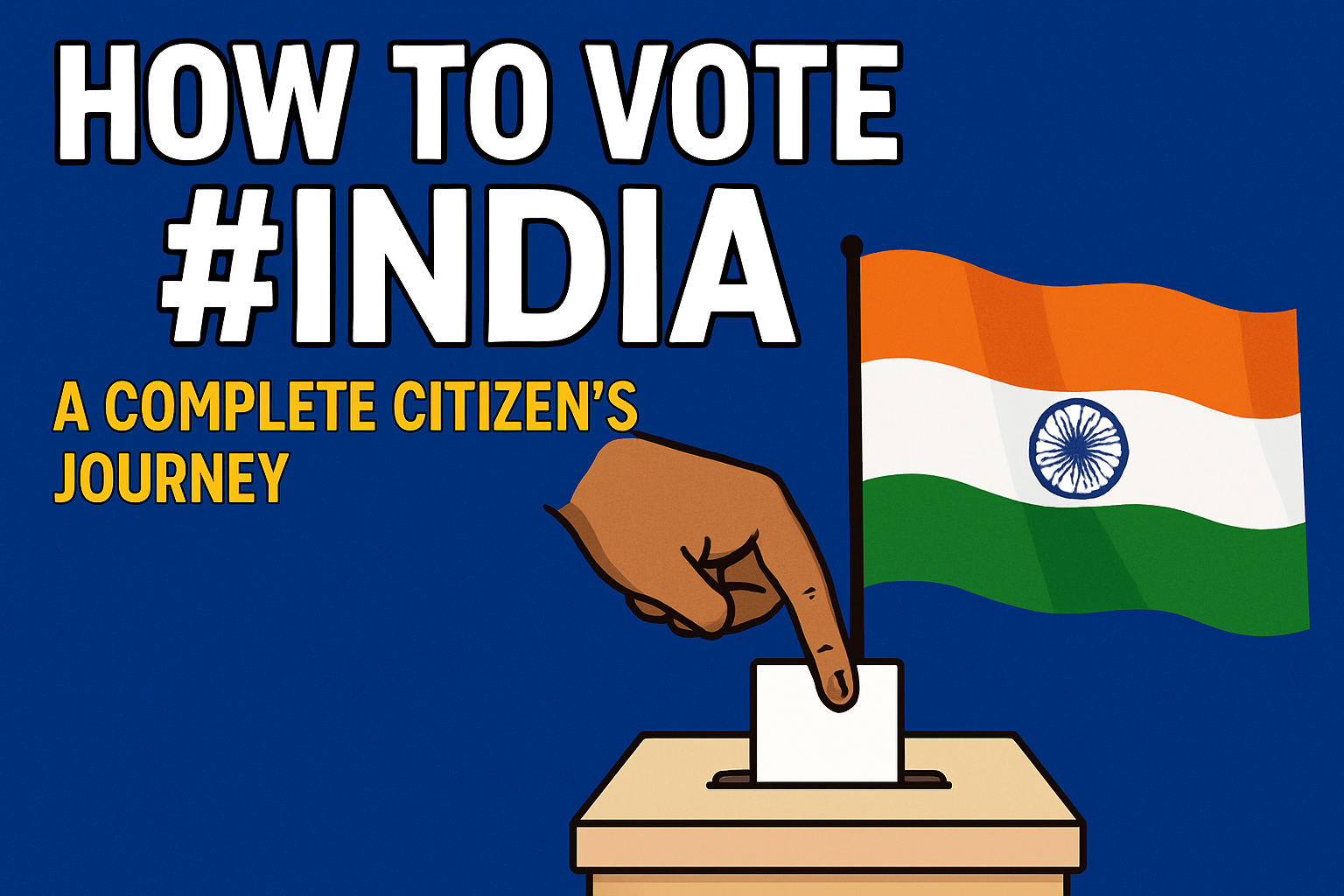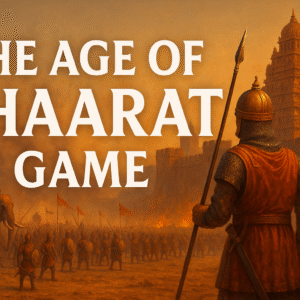Table of Contents
Author’s Note:
When I first turned 18, I had no clue how the voting process in India worked. All I knew was that voting was important. But how it happened? What documents I needed? Where to go? That was a mystery. Now, after years of observing elections, helping my family and friends vote, and even guiding my younger brother recently, I finally understood the real ground-level process of how to vote #india. This article is my attempt to walk you through the process—not with textbook jargon, but with real experiences, clarity, and straight facts.
Why Every Vote Matters
India is the world’s largest democracy. But here’s the truth most people skip: our democracy only works if we show up. Every single vote contributes to shaping the future of our nation—whether it’s for local issues or national leadership. Many youth in India still ask how to vote #india not because they’re lazy, but because no one actually explains it in simple terms.
When I cast my first vote, I felt powerful. It wasn’t about choosing a party. It was about finally using my voice in the system. That’s exactly why this guide is for you—so that when the next election comes around, you don’t miss your chance because you didn’t know the how.
Who Can Vote in India?
This might sound basic, but it’s worth clearing up. You are eligible to vote in India if:
- You’re an Indian citizen
- You are 18 years or older on the qualifying date (usually Jan 1 of the election year)
- You are registered on the electoral roll
You’d be surprised how many people I’ve met who thought they could vote just by showing their Aadhaar card on election day. Nope—it doesn’t work like that. You need to be registered as a voter, and that brings us to the most asked question: how to vote #india if you’re not yet on the list?
Voter Registration – The Real First Step
Let’s clear this once and for all: you cannot vote unless you’re registered.
You can apply to be a voter in India using Form 6 on the National Voter Services Portal (NVSP).
Here’s what you’ll need:
- Passport-size photograph
- Proof of age (for 18–21-year-olds): birth certificate, school certificate, etc.
- Proof of address: Aadhaar, utility bill, bank statement, etc.
Once you apply, the Booth Level Officer (BLO) may visit your home to verify the details. Within 30 days, if all goes well, your Voter ID (EPIC) will be issued and sent to your address. I remember helping my cousin with this online—it took us 20 minutes to apply, and we got the ID in under a month.
This is where most people stop and ask: “So now I’m registered. What’s next in how to vote #india?” Let’s get into that.
Know Your Constituency and Polling Booth
Once your voter ID is ready, the next step is to locate your polling station. You can use this official link: https://electoralsearch.eci.gov.in
Here you can:
- Check your name in the voter list
- Get your booth location
- Find your Electoral Photo Identity Card (EPIC) number
When I helped my grandmother find her booth in the last election, we simply entered her name and father’s name on the site. Boom—the full details popped up.
This is an underrated part of understanding how to vote #india—many voters get confused on election day simply because they don’t know where to go. Save your booth details beforehand.
What to Carry on Voting Day
On election day, you must carry any one of the following:
- Voter ID (EPIC)
- Aadhaar Card
- Passport
- Driving License
- PAN Card
- Service ID cards (for government employees)
I once forgot my Voter ID, but since I had my Aadhaar, I could still vote. Just make sure the name and details match your entry in the electoral roll.
This is a key part of how to vote #india—your identity verification. No document, no vote.
Voting Process – Step by Step
When you arrive at your polling station, here’s what typically happens:
- Queue Up: You join the line based on your serial number or booth.
- Check by BLO: The polling officer checks your name in the voter list and your ID.
- Ink Application: A special indelible ink is applied on your finger. This prevents duplicate voting.
- Slip Given: You receive a slip/token and proceed to the Electronic Voting Machine (EVM).
- Cast Your Vote: Press the button next to your chosen candidate’s name on the EVM. A beep sound confirms your vote.
I still remember the buzz when I cast my first vote. That “beep” sound made it real.
And there—you’ve successfully followed how to vote #india, from start to finish.
VVPAT – Know Your Vote Was Counted
After you vote, you’ll see a VVPAT (Voter Verifiable Paper Audit Trail) window flash for 7 seconds. It shows the symbol and name of the candidate you voted for.
This is another level of transparency. If you don’t see this or something’s wrong, you can raise a complaint immediately. This system is part of how India ensures a fair electoral process. Another underrated step in how to vote #india that ensures your vote really counts.
What If You’re Away from Home?

Let’s say you’ve moved to another city for studies or work. In that case, you need to change your constituency by submitting Form 6 again—this time with the new address. This must be done before the voter list is frozen (usually a few months before elections).
Last year, one of my college juniors was upset that she couldn’t go home to vote. We sat one evening and updated her address online. Now, she’s registered in Bangalore instead of Guwahati.
Understanding relocation is critical in how to vote #india. Don’t assume you’ll always vote where you were born.
Can You Vote Without Voter ID?
Technically, yes—if your name is on the electoral roll, you can vote using alternate government-issued ID.
However, it’s strongly advised to have your Voter ID (EPIC). It makes the process smoother and avoids confusion. I’ve seen people sent back from polling booths simply because their name couldn’t be matched correctly due to typos.
Having a proper Voter ID is a game changer in simplifying how to vote #india.
Common Mistakes First-Time Voters Make
Let’s be real—how to vote #india isn’t something they teach in school. And most of us learn it the hard way—by either making mistakes ourselves or watching others do so. Here are some common pitfalls that can cost your vote:
1. Not Checking the Voter List in Advance
Just having a Voter ID card doesn’t guarantee you can vote. I’ve seen people turned away from booths because their name wasn’t in the updated electoral roll. Always check your name before election day at electoralsearch.eci.gov.in.
2. Reaching the Wrong Booth
I made this mistake myself in 2019. I assumed my booth was the same as last time, but my constituency had been reorganized. I reached the wrong location and had to rush to the correct one in another part of town. That 20-minute panic made me truly understand how detailed how to vote #india can be.
3. Forgetting Valid ID Proof
Many believe the Voter ID is the only valid document. But you can vote with a PAN Card, Aadhaar, Passport, etc., as long as your name is on the list. Still, not carrying any ID is one of the biggest reasons voters are turned away.
4. Falling for Fake News
From fake dates to wrong booth numbers shared on WhatsApp, misinformation is everywhere. One of my friends almost skipped voting because he thought it had been rescheduled. Verify everything on official government portals.
Learning these basics is part of mastering how to vote #india so that your efforts don’t go to waste.
What If There’s a Problem While Voting?
Democracy only works if there’s accountability. If you ever face issues like missing names, voter fraud, or electoral misconduct, there are ways to raise your voice:
1. Voter Helpline App (Official ECI App)
You can download the official ‘Voter Helpline’ app by the Election Commission of India. It allows you to:
- Search your name in the roll
- File complaints
- Track application status
- Know your booth officer details
This app is an underrated gem in the how to vote #india process. It simplifies everything digitally, even for non-tech-savvy users.
2. cVIGIL App
If you witness any illegal activities, like cash-for-votes or campaigning near booths on voting day, you can record and upload photos/videos through cVIGIL, and action is taken in 100 minutes or less. I used it once when someone was distributing food packets outside a polling station. The app kept me anonymous but ensured action.
3. National Contact Center
Call 1950 (toll-free) from your phone. I once called to confirm my brother’s polling location and the operator was quick and helpful.
These tools are all designed to make how to vote #india more transparent and citizen-friendly.
Real Stories from the Ground – What It Feels Like
Let me share a few stories from my circle. These aren’t in news articles or blogs, but they’re real, lived experiences that show how the Indian election process touches lives.
My Aunt in Rural Assam
She was 58, had never voted before. Why? “What will change?” she’d ask. But last year, we helped her register, took her to the booth, and the change in her eyes after casting her vote was powerful. “It feels like I count,” she said.
That’s the power of how to vote #india—empowering citizens one at a time.
My Cousin in Delhi
She’s visually impaired and voted with the help of the Braille-enabled EVM. She told me how respectful the booth officers were, guiding her with patience. It was her moment of independence. The Election Commission has made serious efforts for accessible voting—ramps, wheelchairs, priority queues—all part of making how to vote #india inclusive.
These human stories remind us that behind every “booth number” and “voter list” is a real person using their voice.
Voter Awareness Campaigns in India
The Election Commission runs a massive campaign called SVEEP (Systematic Voters’ Education and Electoral Participation). You might’ve seen slogans like:
- “No Voter to be Left Behind”
- “Proud to be a Voter – Ready to Vote”
They organize college drives, rallies, and even music videos to promote voting among youth. I remember attending a street play in Guwahati that showed why voting matters more than social media rants.
Many campaigns now focus on first-time voters, reminding them that how to vote #india is not just a right—it’s a civic duty.
The Role of Technology in Voting
Modern elections are no longer just about paper lists and long lines. Here’s how digital tools have simplified how to vote #india:
1. EVMs (Electronic Voting Machines)
Reliable, secure, and tested through mock polling. These machines replaced paper ballots, reducing fake voting and long delays.
2. VVPAT (Voter Verified Paper Audit Trail)
This innovation brings transparency. After pressing the EVM button, you see a printed slip (visible for 7 seconds) confirming your vote went to the right candidate.
3. Online Voter Registration
No need to go anywhere physically. With a smartphone, you can now apply, upload documents, track your status, and receive your EPIC at home.
4. State Portals & SMS Alerts
States like Kerala, Maharashtra, and Assam send polling booth updates and voter status by SMS. This makes how to vote #india easier for rural and urban voters alike.
Frequently Asked Questions (FAQs)
Q1: Can I vote if I’ve lost my Voter ID card?
Yes, as long as your name is on the voter list. Carry any valid government ID like Aadhaar, Passport, etc.
Q2: Can NRIs vote in Indian elections?
Yes, NRIs can register as overseas voters and vote in-person if they’re present in India on election day.
Q3: Is voting mandatory in India?
No, but it’s highly encouraged. There’s no legal penalty for not voting, but your silence becomes someone else’s choice.
Q4: Can I vote online in India?
Not yet. While registration and tracking are online, voting itself must be done physically at your polling booth.
Q5: How to vote #india if I’m differently-abled?
You can avail facilities like ramps, wheelchairs, volunteers, and Braille EVMs. Just mention your needs during registration or call 1950 in advance.
Why This Matters More Than Ever
We often think democracy is about electing big leaders. But it’s also about roads in our village, streetlights in our colony, and jobs in our state. All of that begins with your vote.
How to vote #india is not just a set of steps. It’s a way of claiming your stake in how your country is run. No one can take that from you—but it’s your responsibility to show up.
I’ve seen people skip voting because they were busy, disinterested, or felt their one vote didn’t matter. But in close elections, one booth can change a seat. And one seat can change the nation’s path.
So, my humble message to you is this: don’t just scroll, act. Find out how to vote. Help someone else register. Share real info, not forwards. Be the voter your future self will thank you for being.
Legal Framework Behind the Right to Vote
Before we close, let’s touch on the legal side of how to vote #india—because your right to vote isn’t just a social responsibility; it’s protected by the Constitution.
Article 326 of the Indian Constitution
This article grants the right to vote to every Indian citizen aged 18 and above, provided they are not disqualified under the law (due to mental incapacity, criminal conviction, or corrupt practices).
Representation of the People Act, 1950 & 1951
These acts regulate:
- Who can vote
- How voter rolls are maintained
- The conduct of elections
- Rules around disqualification, booth capturing, and model code of conduct
Many of us don’t realize that things like offering gifts for votes, bribery, or threatening voters are serious criminal offences. During the 2014 elections, over 100 FIRs were filed in Maharashtra alone for violating voting laws.
Understanding these laws gives weight to the phrase how to vote #india—it’s not just about clicking a button, it’s about upholding democratic integrity.
State-Specific Voting Considerations
Voting may be a national right, but the experience can vary from state to state. Here’s what I noticed:
Rural States (like Bihar, Assam, and UP)
Challenges include:
- Long distances to polling booths
- Low voter literacy
- Influence of local leaders and caste-based politics
The Election Commission deploys extra security and awareness drives in these regions.
Urban States (like Delhi, Maharashtra, Karnataka)
Challenges include:
- Urban apathy
- High work stress and low turnout on weekdays
- Confusion due to multiple residential addresses
Many working professionals say they want to vote, but don’t know how to vote #india if they’ve moved for jobs or college. Online updates to voter cards are a game-changer for them.
Encouraging the Next Generation of Voters
I once asked a 19-year-old, “Did you vote?”
He said, “Bro, I don’t think one vote matters.”
That struck me hard. So I asked, “Would it matter if your job, college fee, or internet freedom depended on it?” He paused—and the next time elections came, he voted.
The younger generation needs more than slogans. We need real examples, role models, and accessible education on how to vote #india. Schools and colleges must host mock elections. Social media influencers should take charge of spreading verified info.
Because when the youth vote, nations evolve.
Final Checklist Before You Vote
Here’s your quick, no-nonsense checklist:
- [ ] Is your name on the voter list?
- [ ] Do you know your polling booth location?
- [ ] Have you checked your EPIC number?
- [ ] Do you have valid ID proof?
- [ ] Did you verify election date & time in your area?
If all 5 are “Yes,” you’re good to go.
You now understand how to vote #india not just in theory—but with practice, emotion, and responsibility.
Let Your Finger Speak
In the end, your inked finger is more than a photo op. It’s your loudest voice.
Voting isn’t about being perfect, or even fully political—it’s about participation. It’s a commitment that says, “I care. I showed up.”
So, whether you’re a student, a farmer, a business owner, or a homemaker—you count.
Now that you know how to vote #india, promise yourself to never skip it.
Your vote. Your power. Your future.




Leave a Reply